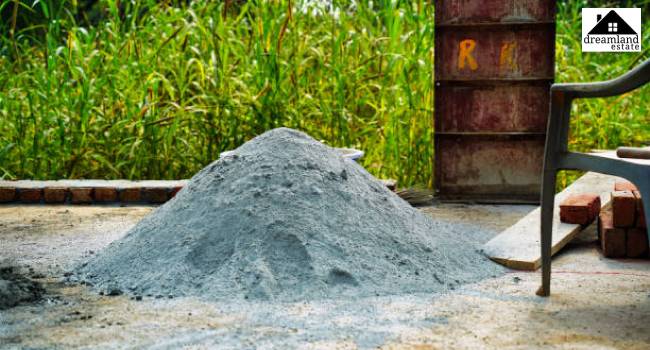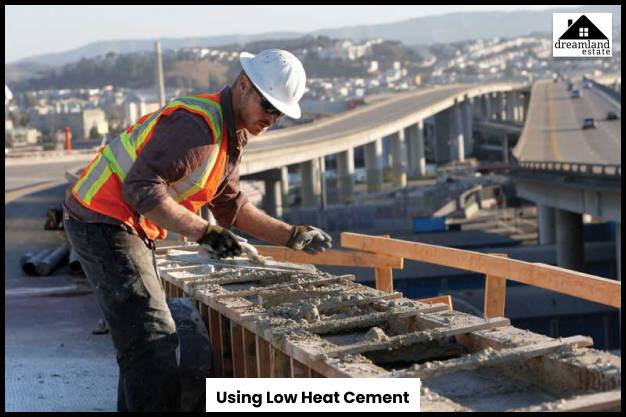What Is Low Heat Cement? Is It Good To Use?

Have you heard about low heat cement? The construction industry is one of a kind that looks simple on the outside but filled with minute details inside. For instance, have you seen concrete crack under pressure? Those cracks on your walls are the result of some sort of pressure, but those are small-scale cracks and are not of much relevance.
If you look at the bigger picture, you will realize the kind of danger posed by faulty construction in the case of large-scale projects like constructing a dam. So it was only a matter of time before some experts came up with a solution. And wham! Low heat cement was born. Keep reading to find out about the superpowers of this cement!
What Is Low Heat Cement?
Simply put, the low heat cement has been designed in a particular way for providing low heat of hydration during the process of settling and hardening. The ordinary cement available in the market is Portland cement which is altered and modified before you can get low-heat cement required for the construction of anything that might resort to thermal cracking.
To understand how this cement functions, it is crucial to know its uses, composition, and properties in detail.
Composition Of Low Heat Cement:
Low heat cement’s composition is very similar to ordinary Portland cement, with even identical changes in chemical compositions in terms of percentage. While it contains a low rate of tricalcium aluminate, this cement also includes a high portion of dicalcium silicate.
Characteristics Of Low Heat Cement:
- The heat of hydration in low heat cement is lower than that of ordinary Portland Cement by twenty percent.
- The quantity of water needed for hydration is low. The concrete is fluid by its nature, and it results in high workability.
- Although the initial strength of the cement is low, in the final stage, the growth rate is pretty high.
- The cement has impressive resistance to any rupture or shrinkage.
Compatibility For Admixtures:
In case you did not know what low heat cement is compatible with, here’s a list of admixtures that goes with this cement.
- Admixtures that are chemical and meant for concrete
- Any additional material with cement-like peripeties can also be used with Portland cement, like amorphous silica, fly ash, and slag.
Uses Of Low Heat Cement:
Low heat cement is used for,
- This cement is used primarily for constructing dams, raft slabs, and wind turbine plinths.
- Also, it is used for constructing roads and factory surfaces like the work floor of a chemical or sulphuric acid factory.
Is It Good To Use Low Heat Cement?
If you are wondering whether to use low heat cement, it’s better to understand the pros and cons of the cement before taking any decision.
Advantages Of Using Low Heat Cement:
The benefits of using Low-heat cement are as follows,
- Minimizes the risk of thermal cracking in concrete
- Improves durability and overall performance
- Enhanced concrete strengths in the later stages
- Reduces the risk of sulfate attack, especially in pipes made from concrete
- Increases both workability as well as pumpability accompanied by large pourings.
Disadvantages Of Using Low Heat Cement:
The disadvantages of using Low heat cement are as follows,
- This cement is more expensive than regular cement
- Low-heat cement cannot be used in places with cold weather
- Although the final strength of this cement is high, the initial strength is low even compared to the regular Portland cement.
Frequently Asked Questions (FAQs):
1) What Is Low Heat Cement Good For?
It is made in a particular way to offer low hydration heat inside the concrete. As a result, this cement is considered to be perfect for ‘mass concrete pours’ where the temperature rate increases – the temperature, however, must be brought under control for removing any risk of thermal cracking.
2) What Is Low Heat Cement?
The low heat portland cement has been exclusively designed in such a way as to offer low hydration heat in concrete during the period allotted for settling and hardening. It uses a distinctive method for performing its functions.
3) Which Type Of Cement Is Low Heat Cement?
Compiled with AS 3972, Special Purpose Type LH, low heat cement is made from unique cement ingredients like gypsum, clinkers, and furnace slag, all of which together lead to the generation of low heat during hydration.
4) Why Do We Use Low Heat Cement In Dams?
If you are typing on Google, ‘why low heat cement is used in dams,’ then the answer you are looking for is here. In large-scale constructions like dams, the concrete is always at the risk of thermal cracking due to the increase in generated heat during hydration. Consequently, low-heat cement is preferred for controlling the heat of hydration.
5) Which cement is used for marine works?
There are several alternatives of cement available in the market, and the most popular one is the common Portland Cement or OPC. However, marine works usually require a type of cement known as SRC or Sulphate-resisting Cement.
Conclusion:
Now that you have a clear idea of the properties, composition, and even pros-cons of low heat cement, you can take a call based on your requirements, budget, and even weather conditions. The cement might cost you a little more than you expected, but then that’s all right, considering its superpowers of removing cracks.
So what are you waiting for? Invest in some top-quality low-heat cement today!
Read Also:
- Decking With Roof – What Is It? When Should I Replace It?
- Best Ways To Waterproof Your Basement: Costs & Designs
- Do You Know How Much Weight Can Drywall Hold?













Leave A Reply